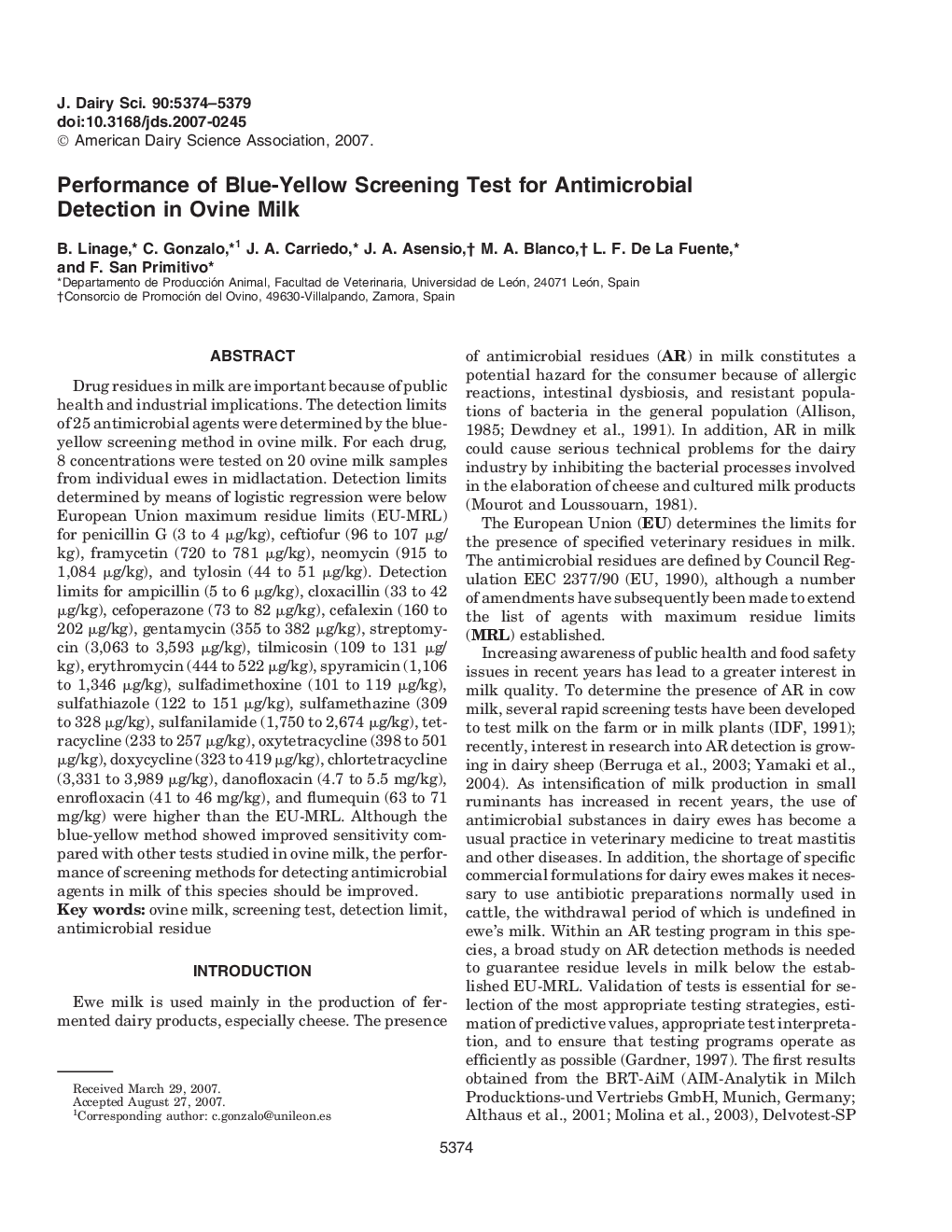| Article ID | Journal | Published Year | Pages | File Type |
|---|---|---|---|---|
| 2440162 | Journal of Dairy Science | 2007 | 6 Pages |
Abstract
Drug residues in milk are important because of public health and industrial implications. The detection limits of 25 antimicrobial agents were determined by the blue-yellow screening method in ovine milk. For each drug, 8 concentrations were tested on 20 ovine milk samples from individual ewes in midlactation. Detection limits determined by means of logistic regression were below European Union maximum residue limits (EU-MRL) for penicillin G (3 to 4 μg/kg), ceftiofur (96 to 107 μg/kg), framycetin (720 to 781 μg/kg), neomycin (915 to 1,084 μg/kg), and tylosin (44 to 51 μg/kg). Detection limits for ampicillin (5 to 6 μg/kg), cloxacillin (33 to 42 μg/kg), cefoperazone (73 to 82 μg/kg), cefalexin (160 to 202 μg/kg), gentamycin (355 to 382 μg/kg), streptomycin (3,063 to 3,593 μg/kg), tilmicosin (109 to 131 μg/kg), erythromycin (444 to 522 μg/kg), spyramicin (1,106 to 1,346 μg/kg), sulfadimethoxine (101 to 119 μg/kg), sulfathiazole (122 to 151 μg/kg), sulfamethazine (309 to 328 μg/kg), sulfanilamide (1,750 to 2,674 μg/kg), tetracycline (233 to 257 μg/kg), oxytetracycline (398 to 501 μg/kg), doxycycline (323 to 419 μg/kg), chlortetracycline (3,331 to 3,989 μg/kg), danofloxacin (4.7 to 5.5 mg/kg), enrofloxacin (41 to 46 mg/kg), and flumequin (63 to 71 mg/kg) were higher than the EU-MRL. Although the blue-yellow method showed improved sensitivity compared with other tests studied in ovine milk, the performance of screening methods for detecting antimicrobial agents in milk of this species should be improved.
Related Topics
Life Sciences
Agricultural and Biological Sciences
Animal Science and Zoology
Authors
B. Linage, C. Gonzalo, J.A. Carriedo, J.A. Asensio, M.A. Blanco, L.F. De La Fuente, F. San Primitivo,
